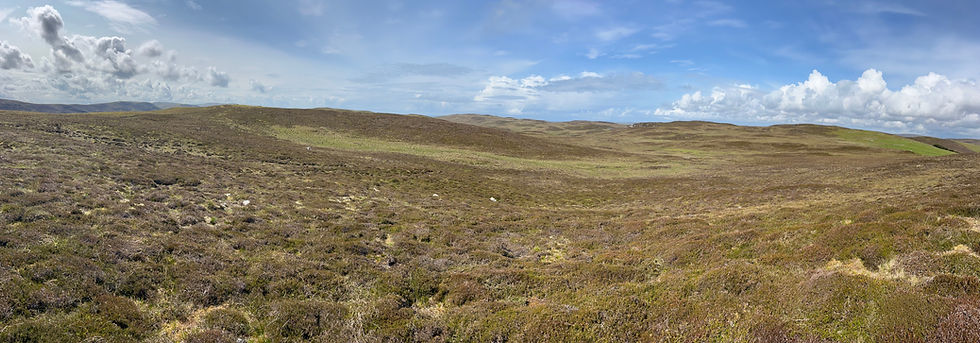Site in Focus - Sotersta
- Stephen Jennings

- Dec 5, 2020
- 3 min read

On the West Side, not far from the dramatic Broch of Culswick, you will find the remains of what appear rather typical abandoned crofts just south of the Loch of Sotersta. However, upon closer inspection you will find this site both quietly extraordinary and illustrative of the many layers of settlement built atop one another we find all over Shetland.
Ignoring the brilliantly linear and stout 19th century crofthouse with more modern sheep wash to the west, instead go to the rather strange second crofthouse just to the east of the burn. In addition to the sea-facing gable end with an unusual window and its largely missing landward gable, you may notice its rather curving walls with altogether primitive build. This, we believe, is because the gables were retrofitted into an earlier building and one of possible Norse origin, a longhouse.
Starting with the earlier structure, the walls curve from north to south to about a 1m depth of arc from a straight line. The northern end is slightly narrower than the southern and terminates in a slightly round cornered but blunt end. The southern portion has an indicative curve to its corner walls with a possible rounded end, but it has been obliterated to accommodate the more modern structure.
Regarding the newer structure for a moment, the southern end is comprised of a cement-rendered gable with a window and fireplace. There are no signs of additional windows ever having been placed in the side walls and it has been wedded into the existing structure’s wall which has created an internal surface that still shows the beginning of the southern curve to the exterior wall. The landward gable end survives to only about a meter in height and has no signs of cement render. With no evident tumble, this may indicate its upper portion was constructed with turf.
Confused? Let’s add another element - the curving nature of the structure would have meant a straight roof beam would have been a complicated endeavour so to mitigate this it appears the landward gable was first cut into and then knitted to the existing structure as well and has an unusual entrance in the NE corner of the side wall.
Suffice to say, if we concern ourselves with the original Norse longhouse, it appears to have been 15.3m long, 3.1m wide at the southern end and 2m wide at the northern with walls that range wildly from .7 to 1.2m in thickness (and this is ignoring a double-walled portion for simplicity).
But this is not all!
The entire thing appears to be built atop, and utilizing the stone of, something much older - a possible circular building of large proportions that is most evident in the southern and eastern areas of the site. Still comprised of a few earthfast stones poking through the turf, it may be further evidenced by some of the stones utilized in the buildings and walls themselves which are large, dressed blocks up to 1.5m long and .5m thick. The most obvious of these is the lintel above the fireplace. The size of the circular footprint, perhaps about 20m diameter, and sheer size and number of stone blocks together would indicate something much larger than a typical roundhouse.
The existence of a prehistoric house should come as no surprise. Whilst there, two hammerstones were found – one used as wall fabric and the other in the stream nearby about 10m south of the two known burnt mounds. Also, the large possible standing stone built into the nearby lambhoose is further indication of prehistoric use of the landscape.
Though exhausted by all this wonderful archaeology, we encourage you on one last adventure before leaving here. Heading south to the sea you will find two exceptional examples of boat noosts and just inland from these an amorphous structure that we interpret as an over-winter noost or, alternatively, a shoreside structure for storing equipment or, alternatively, we do not know. We do know that continuing up the eastern shore to the top of Swinsi Taing you can look directly west to the Burri Stacks and get a grand view of the structures there, likely an eremitical monastery. As yet unvisited, we count eleven buildings as opposed to the seven listed in the Canmore record.
Sotersta is an extraordinary site indeed, and mentally exhausting.









Comments